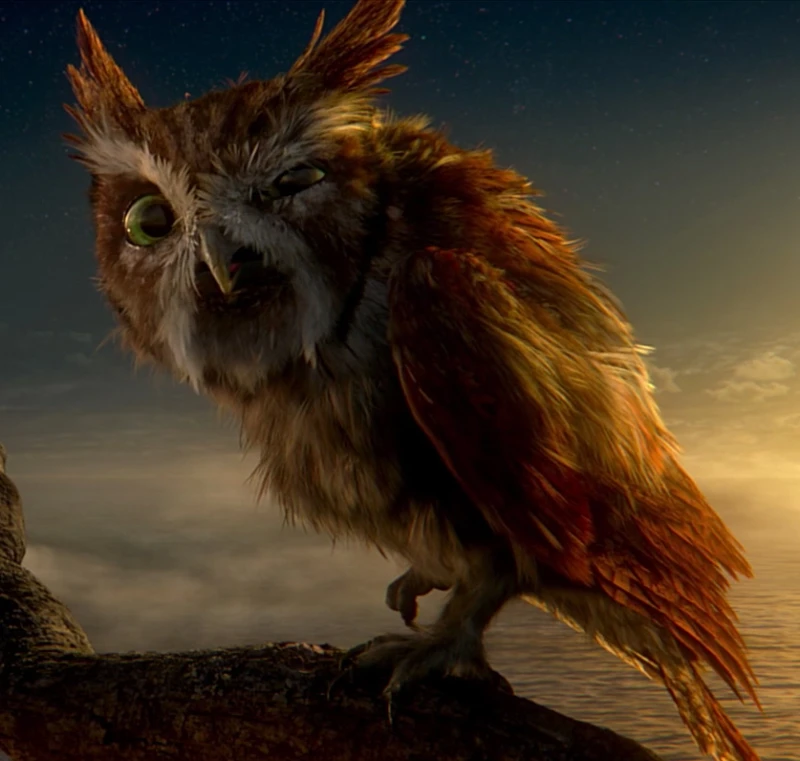Throughout history, owls have had diverse symbolic meanings across cultures. In some cultures, they are seen as wise creatures, while in others, they are associated with death and bad omens. In the Bible, the owl is mentioned several times, and each instance provides insight into its symbolism. In this article with Impeccable Nest, we will explore the meaning of owls in the Bible and what they represent.
Who are the Owls in the Bible?

In the original Hebrew language, the word “owl” appears thirteen times in the Old Testament. In most instances, the word used for ‘owl’ in Hebrew is “kos,” which refers to a type of bird of prey that is nocturnal and hunts at night. The owl species mentioned in the Bible may include:
- Barn Owl
- Little Owl
- Screech Owl
- Long-eared Owl
- Short-eared Owl
What Does the Owl Symbolize in the Bible?
The owl has been attributed different symbolic meanings in the Bible. Some of these include:
Wisdom
In the Book of Job, the owl is described as having the ability to see things in the darkness: “It laughs at the tumult and commotion of the city, it does not hear the driver’s shouts, it does not care about the noise of the wagon.” (Job 39:7). This description highlights the wisdom of the owl and its ability to navigate through dark situations with ease.
Judgment and Destruction
In the prophet Isaiah’s book, the owl is mentioned twice and is used to symbolize judgment and destruction. Isaiah describes the owl as inhabiting deserted cities and edifices, where its hooting sounds deathly and eerie (Isaiah 13:21, 34:11-15).
Desolation
Jeremiah describes the owl as a sign of desolation when speaking about the impending judgment of Babylon: “And Babylon shall become heaps, a dwelling place for jackals, an astonishment, and a hissing, without inhabitant. They shall roar together like lions; they shall yell as lions’ whelps. In their heat, I will make their feasts, and I will make them drunken, that they may rejoice and sleep a perpetual sleep and not wake, saith the Lord. I will bring them down like lambs to the slaughter, like rams with he-goats.” (Jeremiah 51:37-40).
Uncleanliness
The Mosaic law in Leviticus chapter 11 mentions several birds that were considered unclean and not fit for consumption. The owl is among these birds, and its flesh is forbidden to be eaten by the Israelites.
When Are Owls Mentioned in the Bible?
Owls are mentioned in various books of the Bible, including:
- Job
- Psalms
- Isaiah
- Jeremiah
How to Interpret the Symbolism of Owls in the Bible
Interpreting the symbolism of owls in the Bible requires an understanding of the context and literary devices used. Here are some tips on how to interpret the symbolic meaning of owls in the Bible:
- Consider the context in which the owl is mentioned. Is it a positive or negative reference?
- Pay attention to the literary devices used to describe the owl. Does it emphasize its wisdom or destruction qualities?
- Examine other parts of the Bible where similar symbols are used. For instance, in Psalm 91:4, God is described as a shield who protects his people under his wings. This symbolizes God’s protection and care for his people.
- Seek guidance from spiritual leaders and scholars who have studied the Bible and can provide deeper insights into its meaning.
Pros and Cons of Owls in the Bible
Pros:
- Owls are symbols of wisdom and insight.
- They highlight God’s judgment and destruction towards evil.
- The owl’s nocturnal abilities emphasize the importance of being able to see in the darkness.
Cons:
- Owls are also associated with desolation and uncleanliness.
- Their hooting sounds can be eerie and unsettling.
- Owls were considered unclean animals under Mosaic law.
Alternatives to Owls in the Bible
Throughout the Bible, there are other symbols used to represent wisdom, judgment, and protection. These symbols include:
- Eagles
- Lions
- Serpents
- Lambs
- Trees
Step-by-Step Guide to Understanding the Meaning of Owls in the Bible
Here are some steps you can take to understand the meaning of owls in the Bible:
- Read and study the passages where owls are mentioned in the Bible.
- Research the cultural and historical significance of owls in ancient Israelite society.
- Consult religious scholars and leaders for their insights.
- Consider the literary devices used to describe the owl, such as metaphors, similes, and symbolism.
- Look for recurring themes and motifs throughout the Bible that relate to owls, such as darkness, judgment, and desolation.
- Meditate and pray on the meaning of owls in the Bible, seeking guidance from God and spiritual leaders.
Comparison with Other Religious Beliefs
In other cultures and religions, owls are also significant symbols. In ancient Greek mythology, the owl was associated with Athena, the goddess of wisdom, who was often depicted with an owl perched on her shoulder. Similarly, in Native American culture, the owl is viewed as a symbol of wisdom, intuition, and protection.
Conclusion
In conclusion, the symbolism of owls in the Bible offers a unique perspective on these nocturnal creatures. By exploring their different symbolic meanings, we can gain insight into God’s wisdom, judgment, and protection. The owl may represent different things to different people, but by studying its significance in the Bible, we can deepen our spiritual understanding and connection with God.
Read more:

Hey there! I am Salena Snyde, a dream psychologist with over 10 years of experience. I am the primary author of the Dream Meanings section on Impeccable Nest, where I not only share in-depth knowledge about the nature, function, and significance of dreams but also connect with readers through profound articles and quality information. With passion and a diverse knowledge of dreams, I have established strong connections with dream experts worldwide by reading articles and studying leading books on the subject. I believe that the combination of personal insights and sharing from the dream expert community can provide the most profound and comprehensive understanding for everyone.
